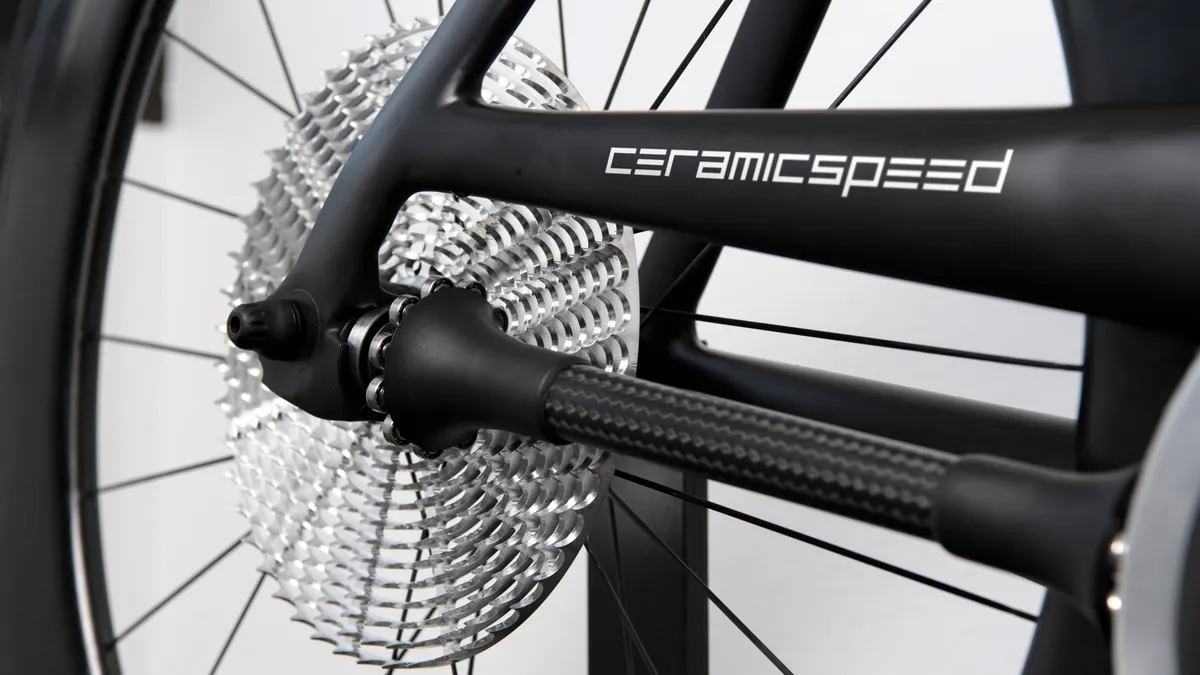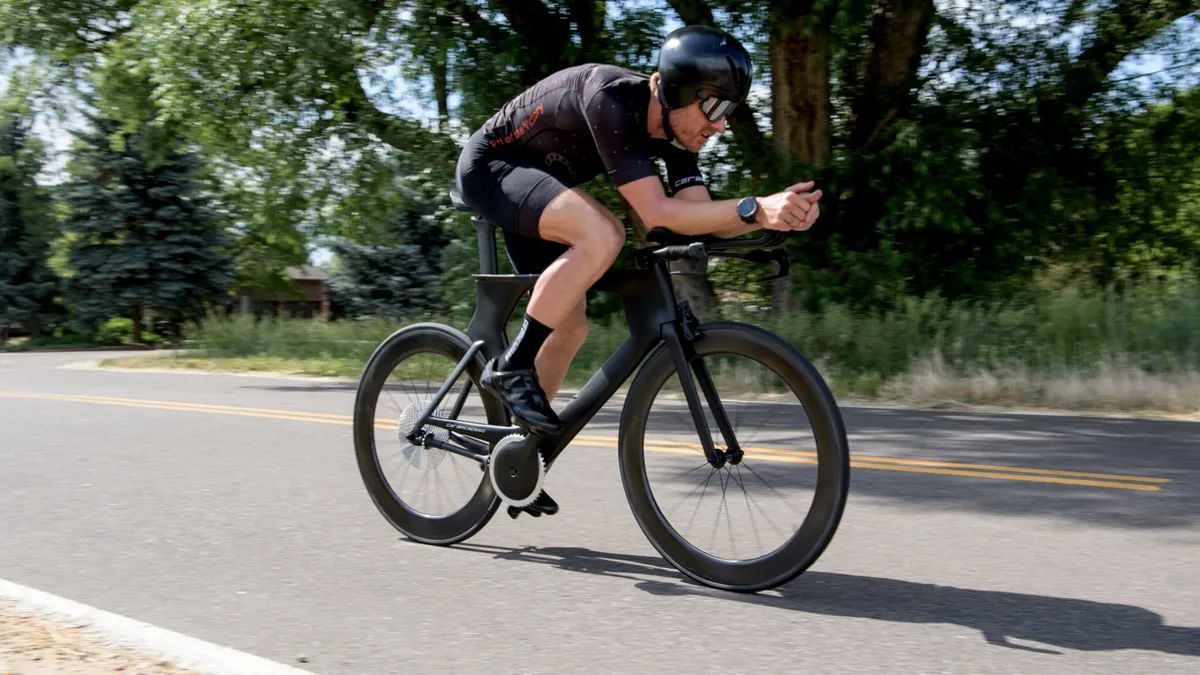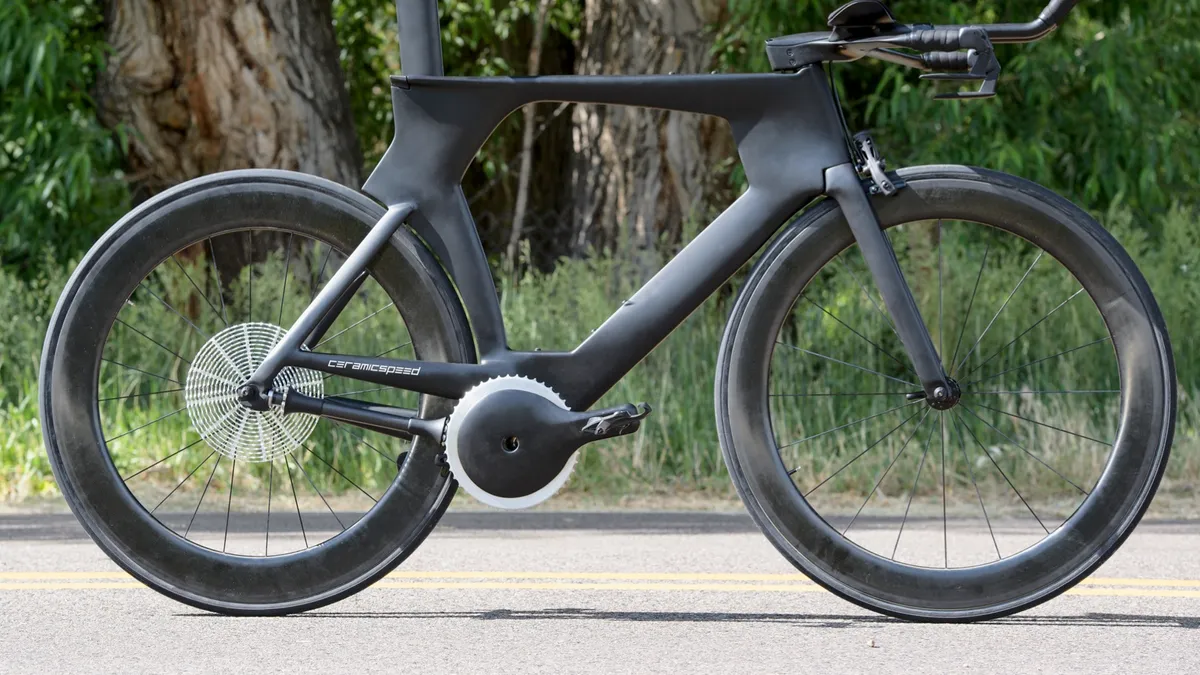CeramicSpeed and Friction Facts have made a business of reducing friction to an absolute minimum, whether with ceramic bearings or oversized pulleys or highly specialized chain lube. Today, the company won a Eurobike Award at the tradeshow in Germany for its DrivEn drive shaft concept, which CeramicSpeed claims to be substantially more efficient than even the most optimized chain system.
CeramicSpeed DrivEn highlights
- Chain (and derailleur pulleys) replaced with drive shaft
- Teeth on chain ring and cogs engage with ceramic bearings on shaft
- Claimed 49% less friction than stock Dura-Ace drivetrain
- Claimed 32% less friction than CeramicSpeed UFO chain with oversized pulleys
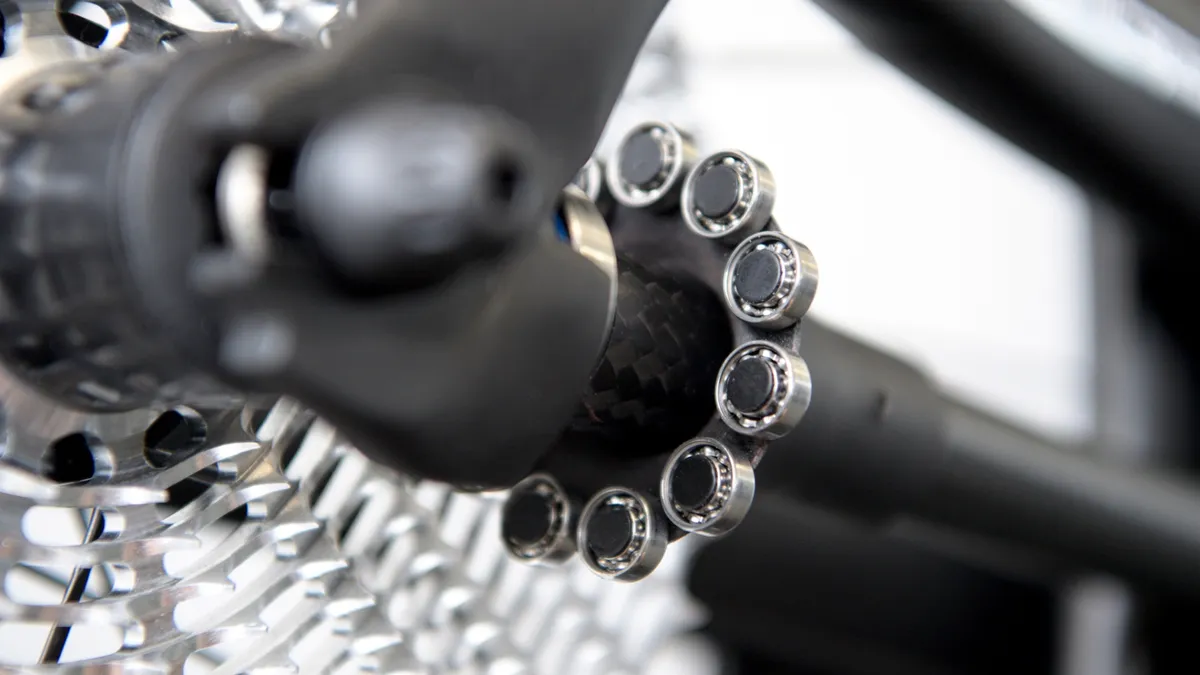
The goal: 99% efficiency
CeramicSpeed recently acquired Friction Facts, a Colorado efficiency test lab, and founder Jason Smith has since been busy researching ways to make drivetrains as efficient as possible.
"A year and a half ago we started a project called Pursuit of the 1% Drivetrain," said Smith, now CeramicSpeed's chief technology office. "The quest was, how can we get a 99% efficient drivetrain?"
Smith said the company had already pushed the envelope with lubrication, bearings and pulleys about as far as possible — creating a roughly 98% efficient driverain — so they had to look to another system. Based in Boulder, Colorado, Smith teamed up with the University of Colorado Mechanical Engineering Department.
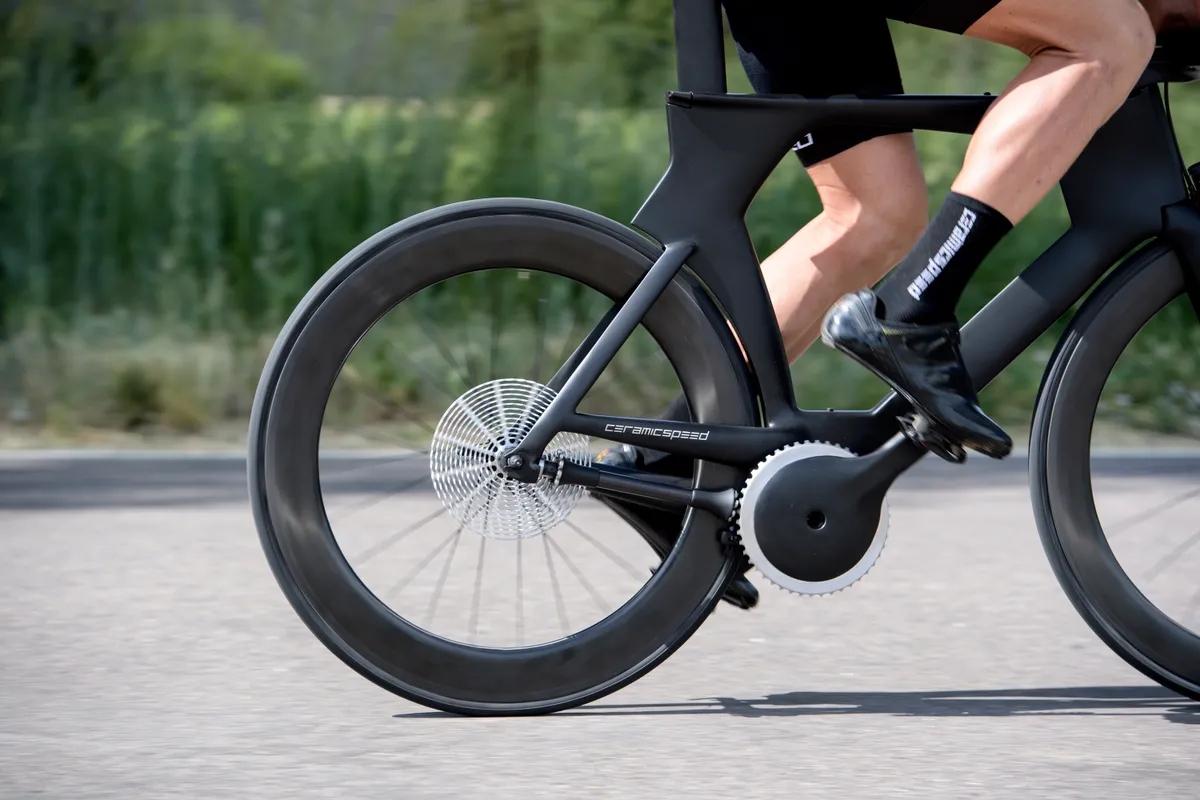
"The shaft concept came up right away – it is just one moving part instead of the many moving parts on a chain and pulleys," Smiths said.
"The concept has been around forever, but with bevel gears, which have a ton of friction. So we set out to make the shaft drive better than a bevel gear. That’s how we came up with roller element."
Reducing stiction points by half
Smith explains that that friction in a chain-based drivetrain is created largely at the eights points of articulation, where the chain bends around the chain ring, cassette and pulleys.
"Any time a chain articulates, friction is created. And any time it disengages, friction is created," Smith said. "When you think about pedaling 95rpm, you are looking at 40,000 stiction points a minute."
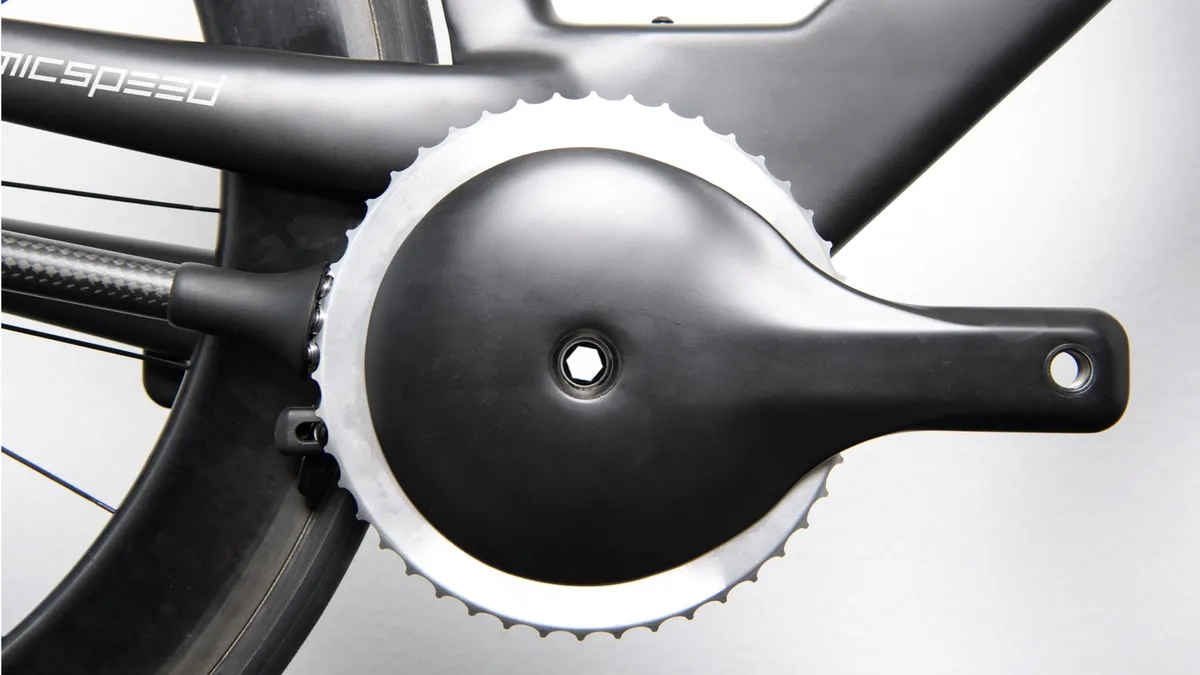
In the DrivEn system, those eight points are replaced by four points, each of which rotate on ceramic bearings. The chain ring's teeth and cassette's cog engage with the bearings on the shaft, which itself spins on bearings.
Smith says this system creates 49% less friction than a Shimano Dura-Ace drivetrain at 250w. The DrivEn system decreases in efficiency above 380w.
No shifting or compatible bikes yet
The CeramicSpeed DrivEn is a concept, and one with several steps to go before becoming a useable product. For starters, there is not yet a way to shift the system, but Smith says a wireless servo could be installed inside the shaft to move it fore and aft on the cassette.
A power meter could also be installed inside the shaft, with a similar measuring system to how a PowerTap hub works, measuring torsional deflection in the cylinder.
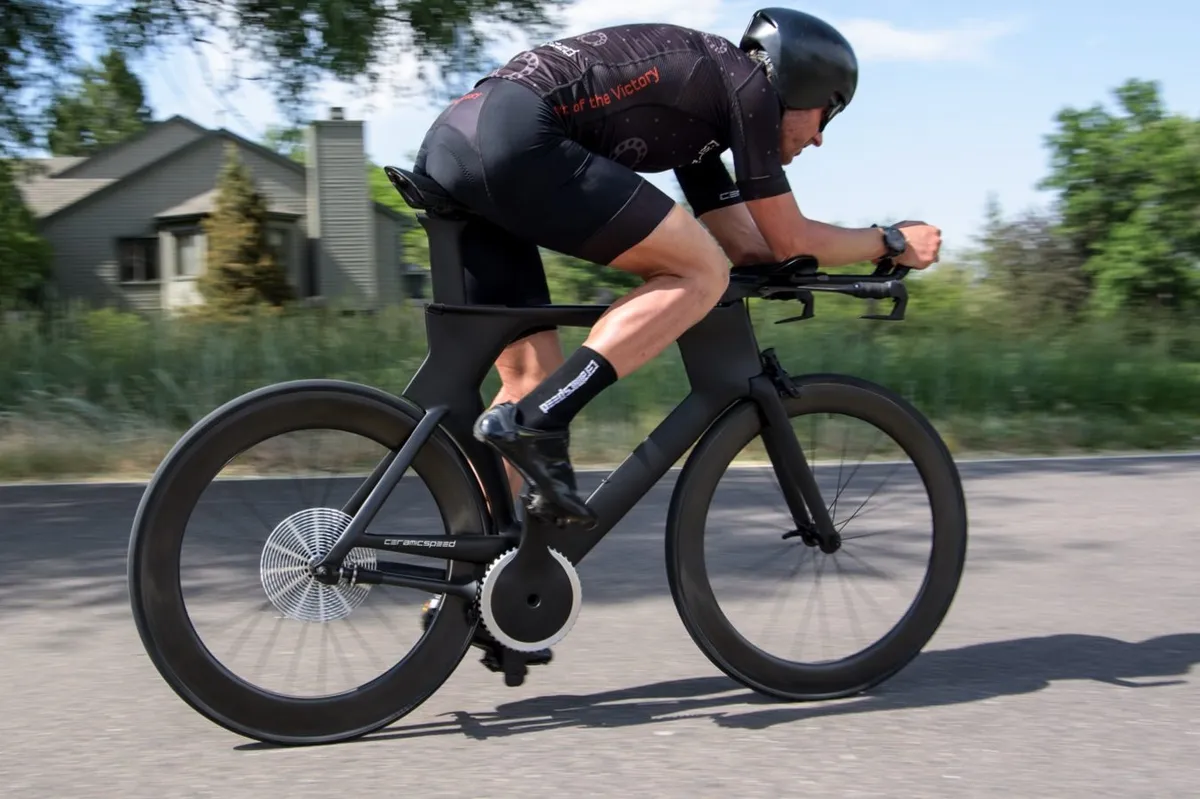
Shifting aside, the DrivEn would require a dedicated frame, as its position is basically where the driveside chainstay is now on a standard bike.
Will this ever become a consumer product? Only time will tell. But in the meantime, Smith and CeramicSpeed are enjoying exploring the possibilities.
